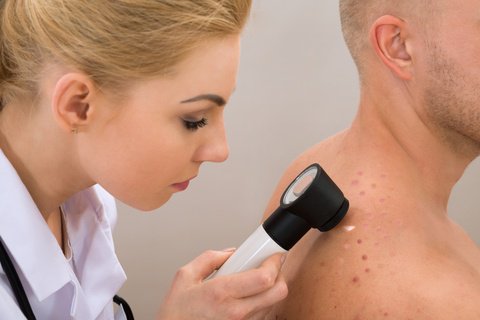Dysplastic nevi, also called atypical moles, may resemble melanoma but are usually benign moles. There is a risk of developing melanoma if you have them, especially if you have ten or more. That makes you 12 times more likely to develop melanoma. This condition is found much more often in patients with melanoma than it is in non-melanoma patients.
An estimated two to eight percent of Caucasian people have these moles and hereditary is tied to them. The melanoma risk is much higher for people with the condition who also have family members with melanoma.
People with dysplastic nevi but no family history of melanoma still face a larger risk of melanoma. That’s reason enough to do monthly self-examinations, get regular professional skin exams by a board-certified dermatologist and avoid overexposure to the sun.
A dysplastic nevus might appear anywhere on your body, but is usually seen in areas that are most exposed to the sun, like on your back or neck. They can also appear in areas not exposed to the sunlight, like the scalp, breasts and areas below the waist. People who have dysplastic nevi usually also have common moles.
Most dysplastic nevi do not become melanoma and remain stable. However, the chance of melanoma is more increased for someone with multiple dysplastic nevi than for someone who has none.
Take extra care to protect your skin from the sun and stay away from tanning booths completely. Let your doctor know if you notice any of the following changes in a dysplastic nevus:
- Color or mass
- Texture or shape
- Dry or scaly surface
- A lump or hard mass
- Itchiness
- Bleeding or oozing
If you have a family history of melanoma, your dermatologist might suggest a skin exam every three to six months.
Having a dysplastic nevus or mole removed is usually not necessary because few of them turn into melanoma. Besides removing all of the moles on the skin would not prevent the development of melanoma as melanoma can develop as a new colored area on the skin. That is why doctors are particular about removing only a mole that changes or a new colored area that appears on the skin.
Looking to Visit a Dermatologist?
We have multiple locations throughout the country, so fill out our simple online form to get in touch with us. One of our local team members will reach out to you shortly to answer your questions or schedule an appointment for you to visit us soon.
Find a location near me
or

